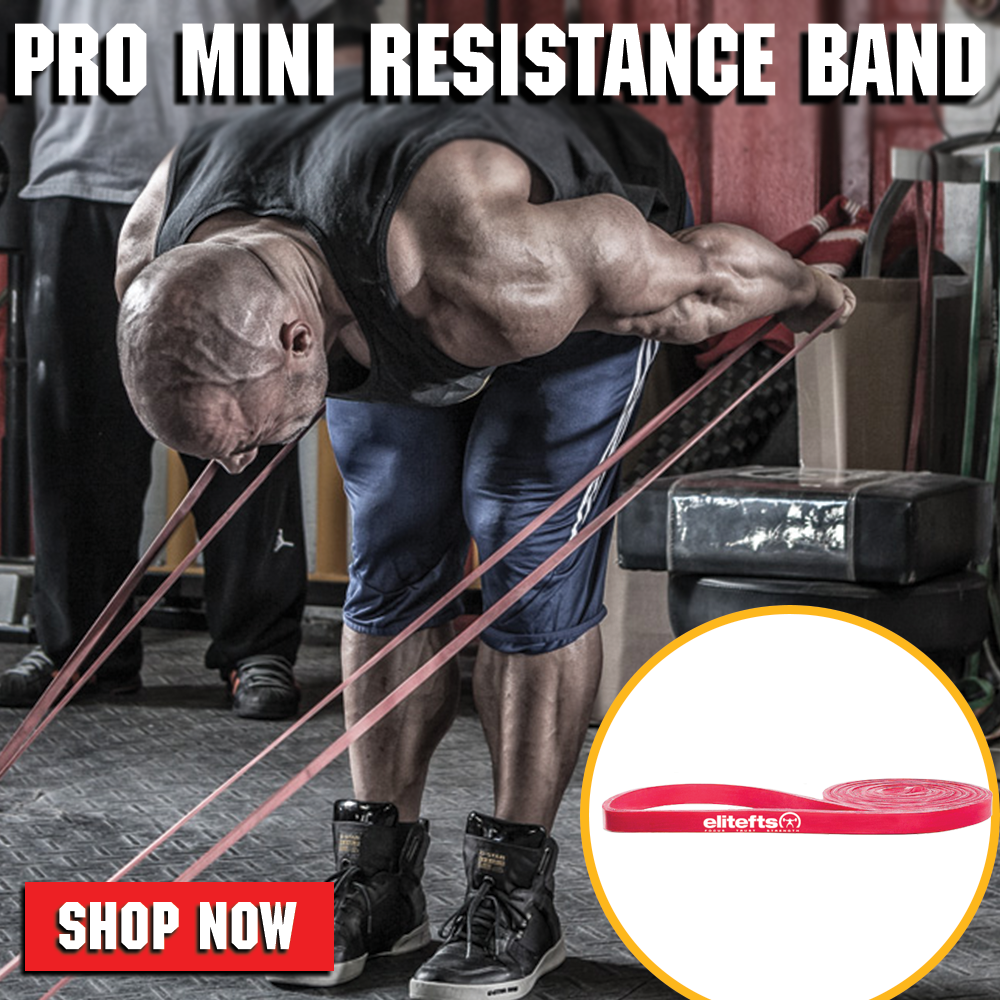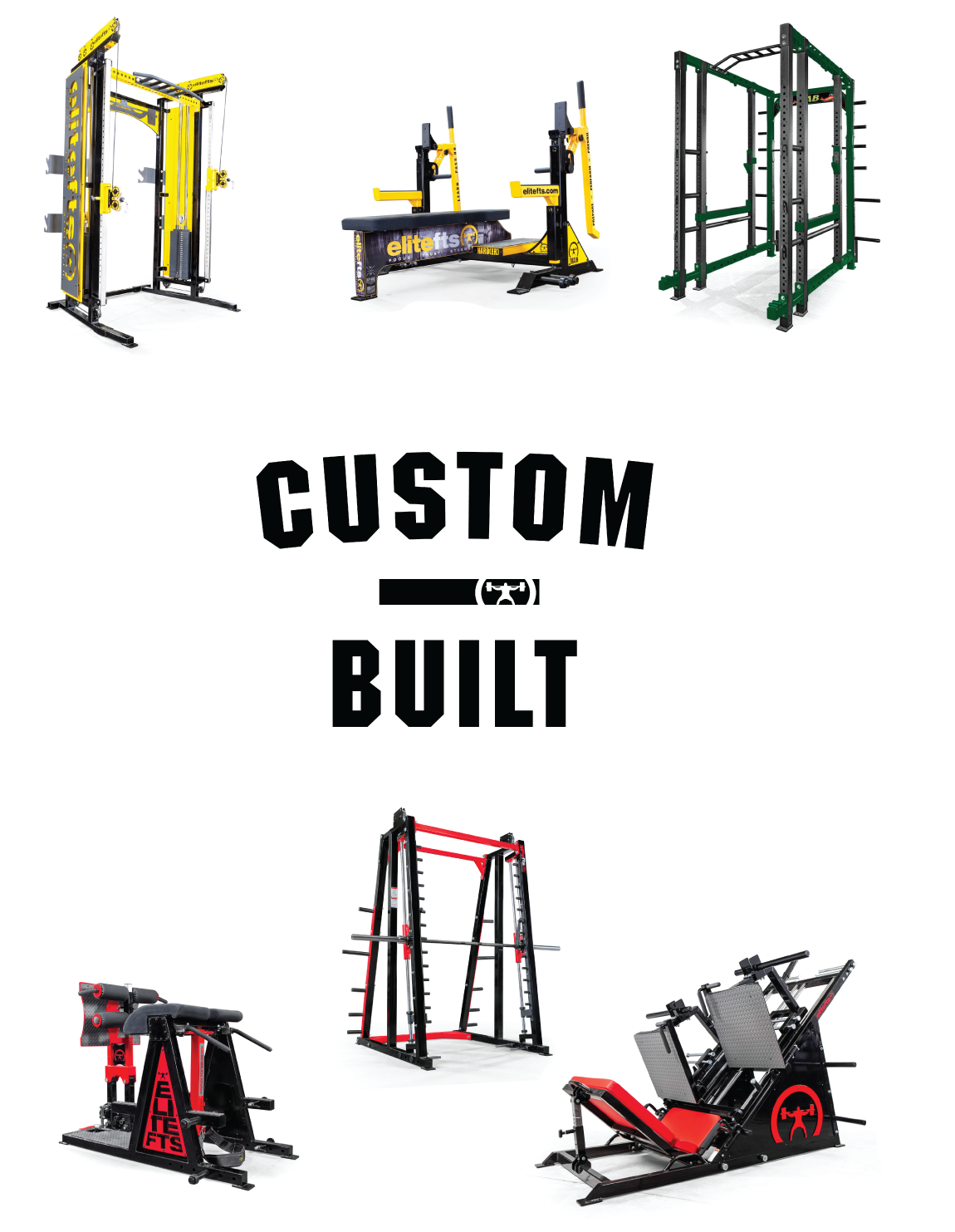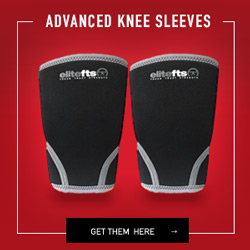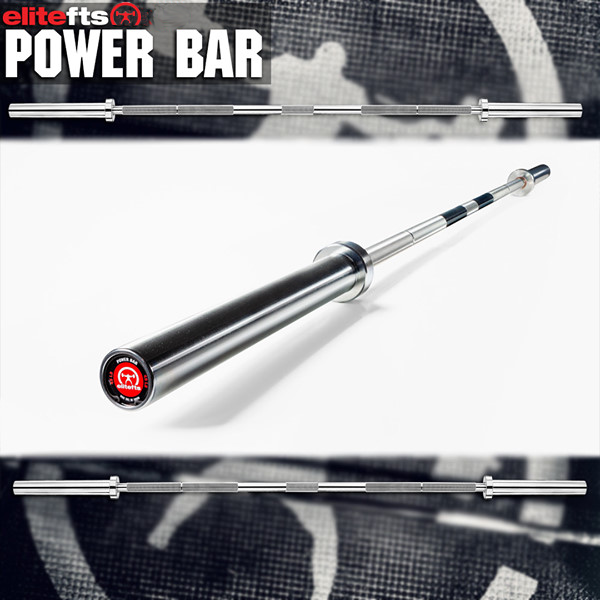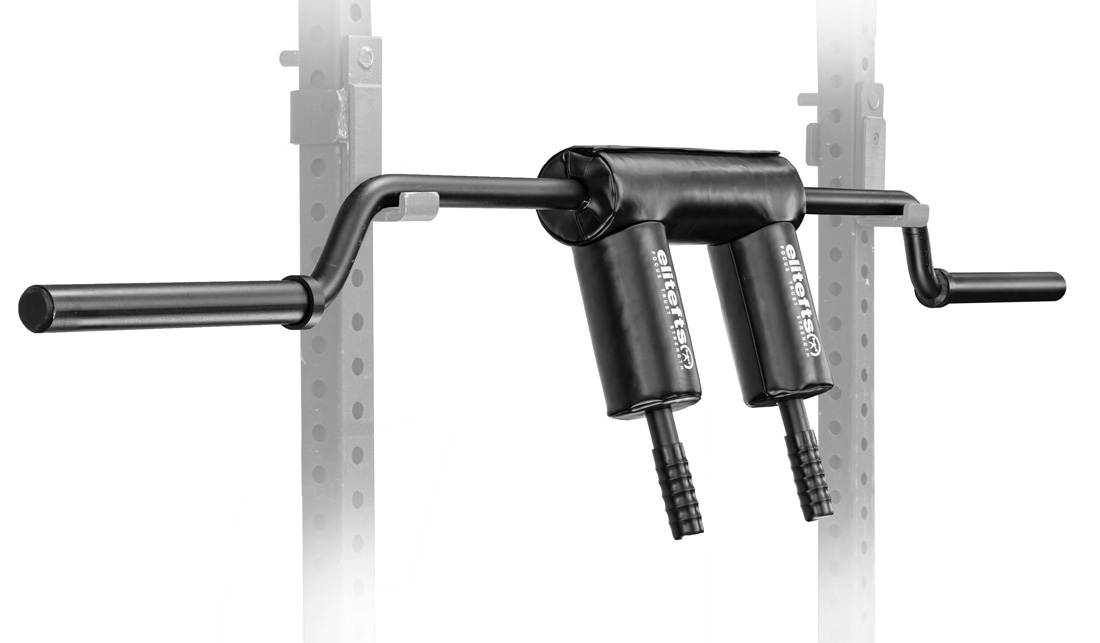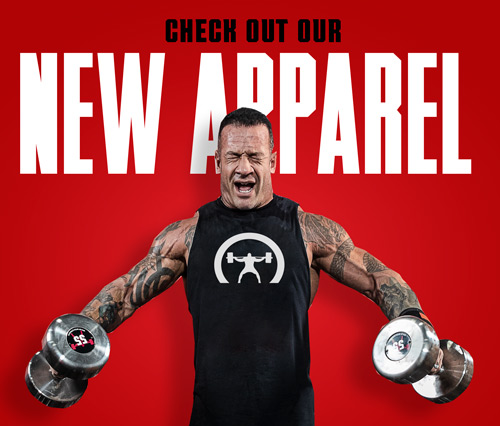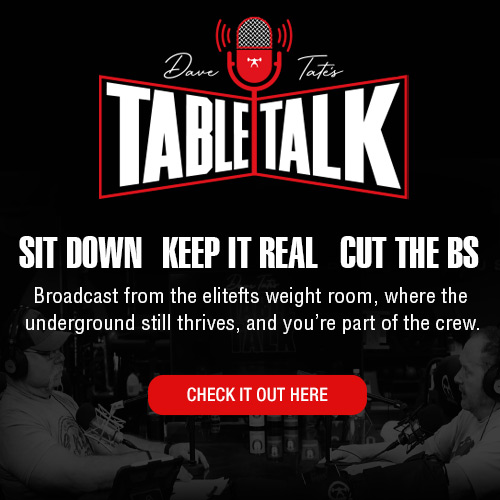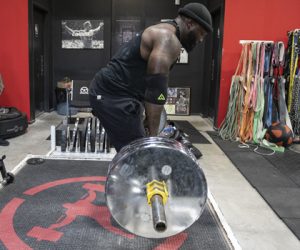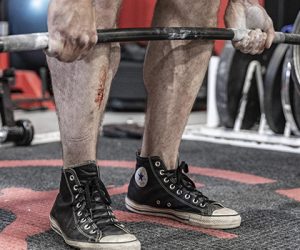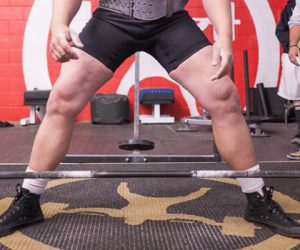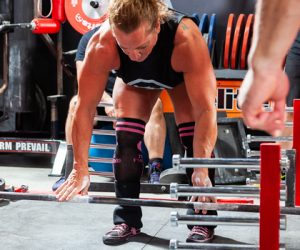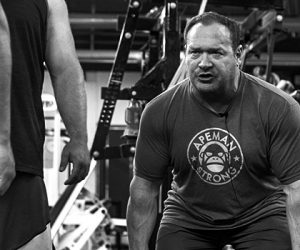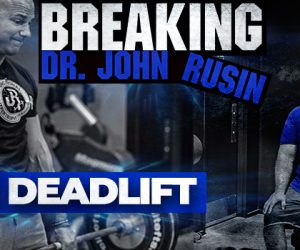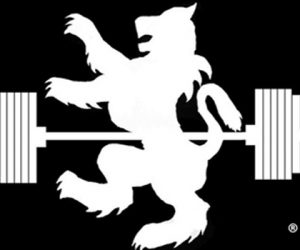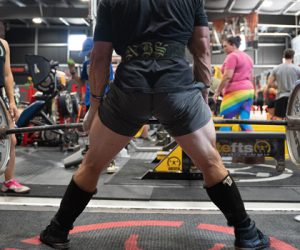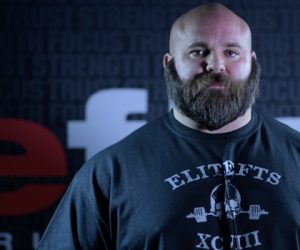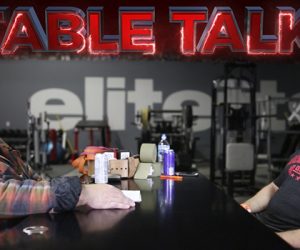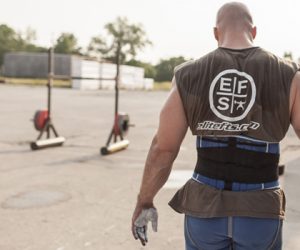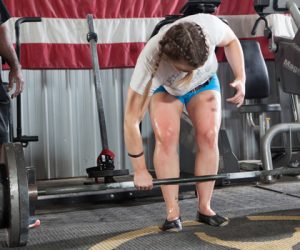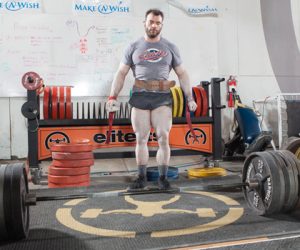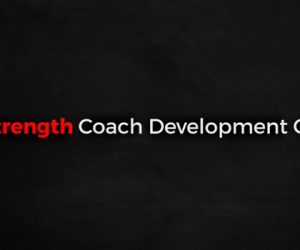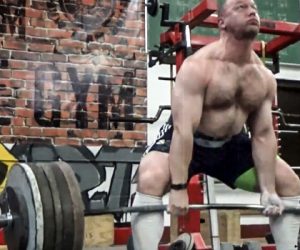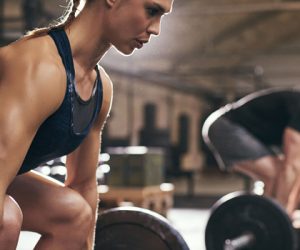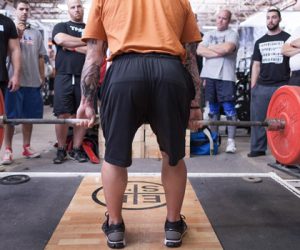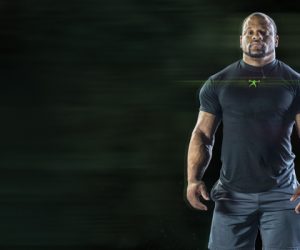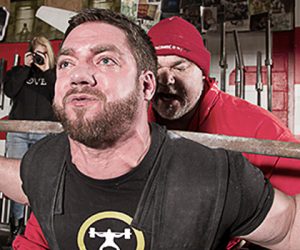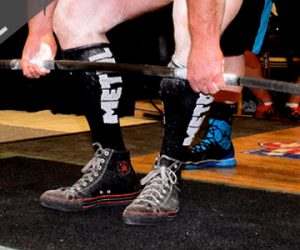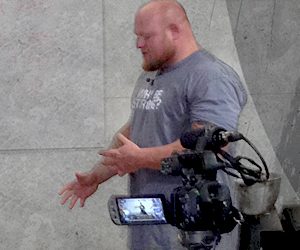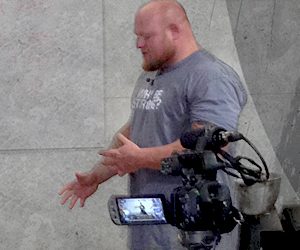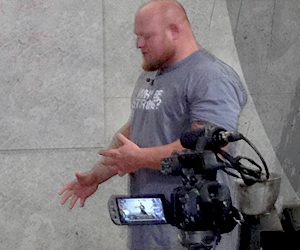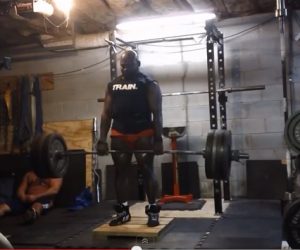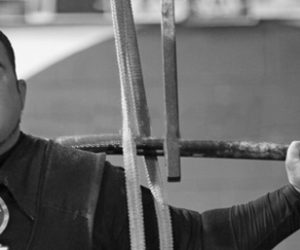Better Ankles Equals Better Conventional Deadlifts
If you can’t go into more dorsiflexion, your calves and quads won’t be in an advantageous position to deadlift.
7 Deadlift Myths—Busted!
These deadlift myths have been around for too long and it’s time they disappear. Get ready to feel SHOCKED, LIED TO, or ANGRY.
8-Week Deadlift Program for the Sumo and Conventional Puller
Whatever side of the fence you’re behind, you should train the deadlift sumo AND conventional. Why? They work synergistically to get you strong while minimizing weak points.
Conventional or Sumo? Or Both?
I’ve noticed a lack of variety in how people deadlift — conventional or sumo — as well as the fact that they rarely change pulls. As someone who does both, I wondered why that was. I set out to solve that mystery with a survey and found some answers from a variety of respondents…
5 Deadlift Cues with Ed Coan
“Pull your lats in” to “slow down” are two of five cues that can make an incredible difference in the execution and lockout of your deadlift.
WATCH: Breaking John Rusin — The Deadlift
As Rusin adds proper breathing into his deadlift sequence (one of many tweaks you’ll see), he notices an immediate difference in his performance. Proper breathing, as he puts it, is a total “game-changer.”
The Sumo Deadlift — You're Doing It the Wrong Way
The sumo deadlift is a misunderstood type of pull with so many advantages. Let’s start with technique so you can smash a PR!
Start Here Before You Clean
A lot of individuals take what’s arguably the most highly coordinated regimen you can perform in the weight room and start individuals doing it day 1. At the collegiate level, these are the movements I make sure that my athletes can do before they are allowed to perform a proper clean motion.
WATCH: Table Talk with Dan Green — Injuries and Trying to Stay at the To...
Has Dan Green’s peak in powerlifting come and gone?
WATCH: Jeremy Frey's 2018 elitefts Sport Performance Summit — Conve...
To be used as a standalone exercise or as a way to build the weightlifting clean from the floor, the conventional deadlift is one of the most important training movements for your athletes to learn.
The Sumo Deadlift for Strongman
You may never do this lift in competition, but training the sumo deadlift can add tons of strength to your conventional deadlift, carrying events, and overhead strength while relieving stress on your back.
The Simple Steps To Add Serious Weight To Your Deadlift
Finding your ideal stance, nailing down good form, and programming properly for volume, intensity, and frequency will keep your weights moving up and your body healthy.
WATCH: The Strength Coach Development Center — Deadlift Progression
One of the best movements to build strength but also one of the hardest to teach for many coaches is the deadlift. It’s worth your time to learn correctly.
The Hybrid Deadlift Stance
In deadlifting, the Goldilocks Zone might not be pulling conventional, nor sumo, nor even Old English Style. For those lifters, what I call the hybrid sumo stance could perhaps be best.
Deadlift Fundamentals — The Difference Between Failure and Lockout
These elite lifters share some fundamental characteristics at the start of their deadlifts—hips high, arm length maximized, shins very close to the bar, and torsos not vertical.
Building the Raw Deadlift
This article will cover everything you need to build a big deadlfit as a raw lifter, from needs analysis, to the role of specific muscles, to choosing your best stance.
Converting to Sumo Deadlifting: How I Made It Work for Me
Deadlifting is one of the oldest and hardest exercises around. It’s very simple—you just pick the bar up off the ground and stand up with it. Well, it’s not that easy for everyone.
Off-Season Case Study #1 — Examining Weakness And Implementing Correctiv...
In this case, we examine a young competitive athlete who has limited experience and is facing several serious issues in his squat, bench press, and deadlift.
3 Reasons You Can't Lock Out Your Deadlift
I’ve heard many times that there’s no technique to deadlifting, you just grab the bar and pull. I have to disagree.
An Updated Deadlift Cycle for Average Joes
This 16-week cycle is for gym rats who have been lifting long enough to have good technique but aren’t interested in peaking for a meet.
Training Women: Deadlift Considerations
Before making the assumption that all women have wide hips and should therefore squat wide and deadlift sumo, consider these other factors that will inform good technique.
WATCH: Darden Q&A From the Compound — Weightlifting for Strongman, D...
Clint answers your questions: Olympic weightlifting for Strongman performance? Sumo or conventional deadlift stance?
Deconstructing the Deadlift
It took me over 30 years, 80,000 deadlifts, teaching and watching thousands of lifters and learning from the "best of the best" to give you the information presented in this article.
So You Think You Can Deadlift? (Part 2)
Matt Wenning has Ryan perform sumo deadlifts to correct conventional pull weaknesses.
So You Think You Can Deadlift? (Part 1)
Matt targets the pull in the same expert fashion that he did with the squat.
Deficit Deadlift off a 3" Block
Elitefts™Lifter Steve Goggins performing Deficit Deadlifts off a 3″ block
Off the Cuff with Brian Carroll: the Jack Conventional Deadlift Suit
Save your manhood. If you are a conventional deadlifter, you need this suit.


